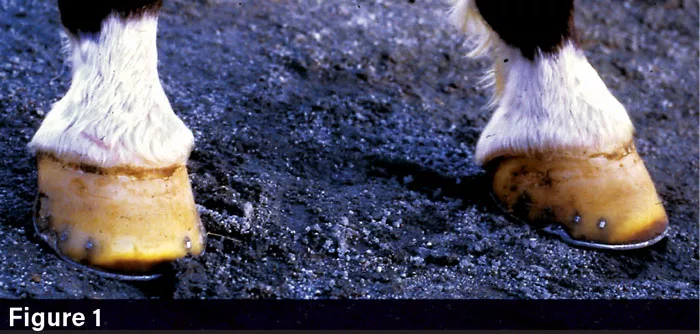American Farriers Journal
American Farriers Journal is the “hands-on” magazine for professional farriers, equine veterinarians and horse care product and service buyers.

The feet are physically too short and close contact with the ground or shoe eventually will cause damage to the internal structures. Randy Luikart
No doubt you have some thoughts on a horse’s hoof length. I recently wrote about the three important lengths for the soundness of the horse — dorsal length, horizontal length and vertical length (or depth). This brief discussion encompasses a thought process of four different lengths of overall hoof length — too short, protective, optimum and too long.
My career predominantly has been involved in longer- footed horses (Saddlebreds, Morgans and Hackneys), although I have included customers with cutting horses, Western pleasure, hunters, jumpers and dressage. The importance of shoeing each discipline varies on what and how each trainer, veterinarian and owner attempts to influence how each is shod and what performance they expect to see. That influence is a big problem in itself, but for now, we are going to define each of these four lengths and how they apply to all disciplines.
Too short is blatantly obvious (Figure 1). The foot is physically too short, and this close contact with the ground or shoe eventually will cause damage to the hoof's internal structures. These internal structures may be exposed, short or weakened…